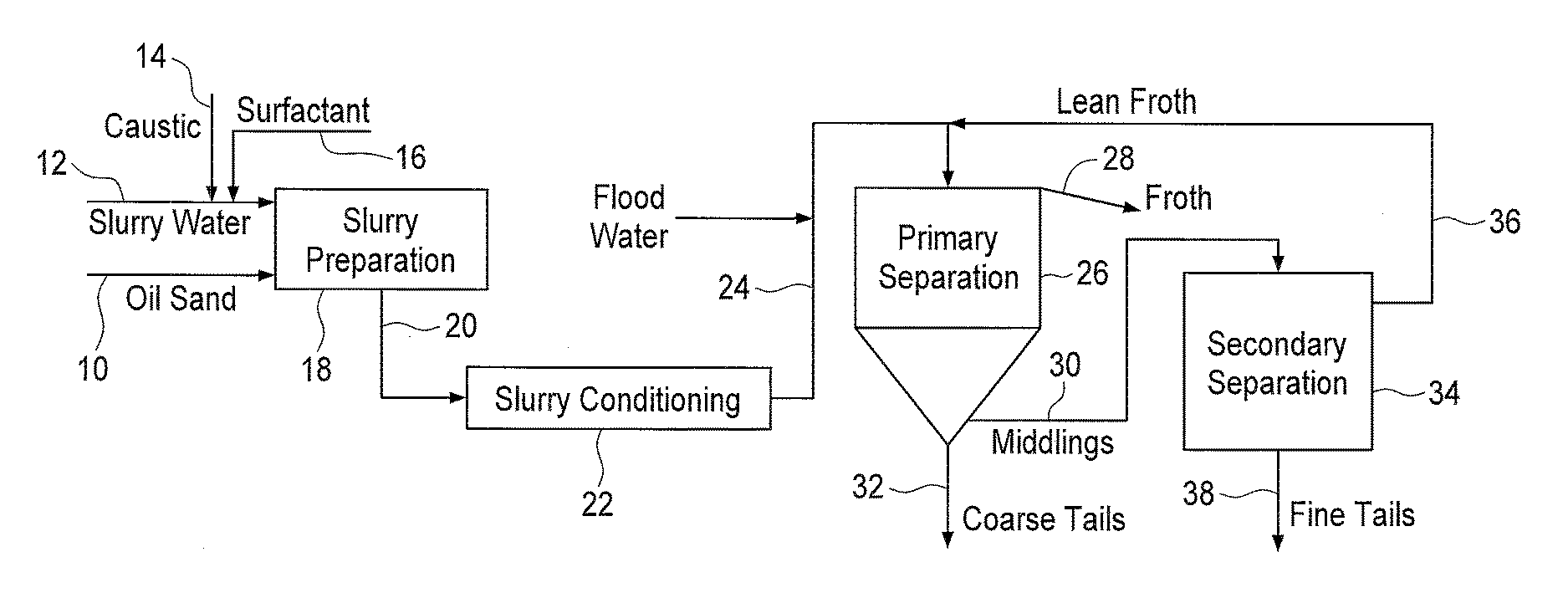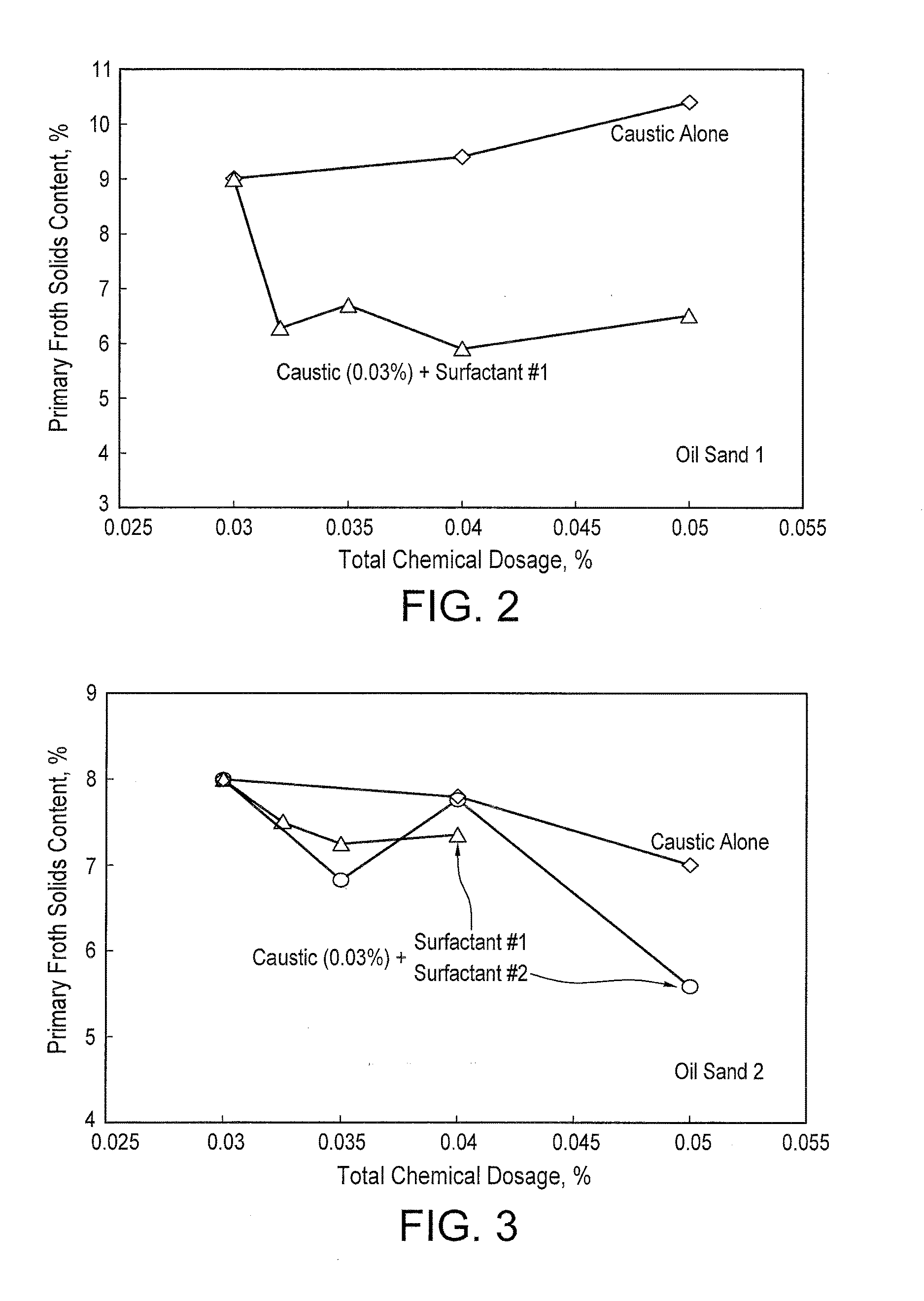Use of surfactants in water-based bitumen extraction processes
a technology of surfactants and water-based bitumen, which is applied in the field of extraction of bitumen, can solve the problems of reducing the content of froth solids, affecting the quality of the final product of negatively affecting the froth treatment process. , to achieve the effect of reducing the quality of froth solids, reducing the cost of froth extraction, and improving the quality of froth
- Summary
- Abstract
- Description
- Claims
- Application Information
AI Technical Summary
Benefits of technology
Problems solved by technology
Method used
Image
Examples
example 1
[0036]Two oil sand samples having low bitumen content and high fines content were used in the following example. In particular, the two oil sand samples tested were a marine ore with a bitumen content of 9 wt % and a fines content of 46 wt % <44 pm (Oil Sand 1) and a marine ore having a bitumen content of 8.7 wt % and a fines content of 39 wt % <44 pm (Oil Sand 2).
[0037]Oil Sand 1 was a very poor processing ore with the highest primary bitumen recovery being ˜32 wt % with the use of caustic alone at 0.05 wt % (based on dry oil sand weight). For this oil sand ore, the use of caustic alone increased the primary froth solids content from 9.0 wt % to 10.4 wt % when caustic dosage was increased from 0.03 to 0.05 wt %. This can be seen in FIG. 2, solid diamonds. However, with the use of a selected surfactant, in this case, sodium dodecyl sulfate, at a dosage as low as 20 ppm (0.002 wt %), in addition to the use of caustic at 0.03 wt %, the primary froth solids content was reduced to aroun...
example 2
[0039]Batch scale tests were done on a variety of different oil sand ore samples using a variety of surfactants and the results are shown in FIG. 4. In batch scale tests, the solids content in bitumen froth is generally much higher than that found in bitumen froth during commercial operations (i.e., a continuous process. Furthermore, a number of poor quality oil sand ores (i.e., low bitumen / high fines) were tested, which also account for the high solids contents in the batch test froth. Nevertheless, batch scale tests are useful to obtain general trends in solids reduction.
[0040]The surfactants tested in these batch scale tests include disodium ethylenediaminetetraacetate (versene), C18H37NH(CH2)SO3Na, sodium stearate (C18H35NaO2), and sodium oleate (C18H33NaO2). When comparing the results of the base cases without using surfactants (solid diamonds), to the results when selected surfactants are used (open circles), it can be seen that use of surfactant reduced the froth solids conte...
PUM
| Property | Measurement | Unit |
|---|---|---|
| temperature | aaaaa | aaaaa |
| temperature | aaaaa | aaaaa |
| temperature | aaaaa | aaaaa |
Abstract
Description
Claims
Application Information
 Login to View More
Login to View More - R&D
- Intellectual Property
- Life Sciences
- Materials
- Tech Scout
- Unparalleled Data Quality
- Higher Quality Content
- 60% Fewer Hallucinations
Browse by: Latest US Patents, China's latest patents, Technical Efficacy Thesaurus, Application Domain, Technology Topic, Popular Technical Reports.
© 2025 PatSnap. All rights reserved.Legal|Privacy policy|Modern Slavery Act Transparency Statement|Sitemap|About US| Contact US: help@patsnap.com



